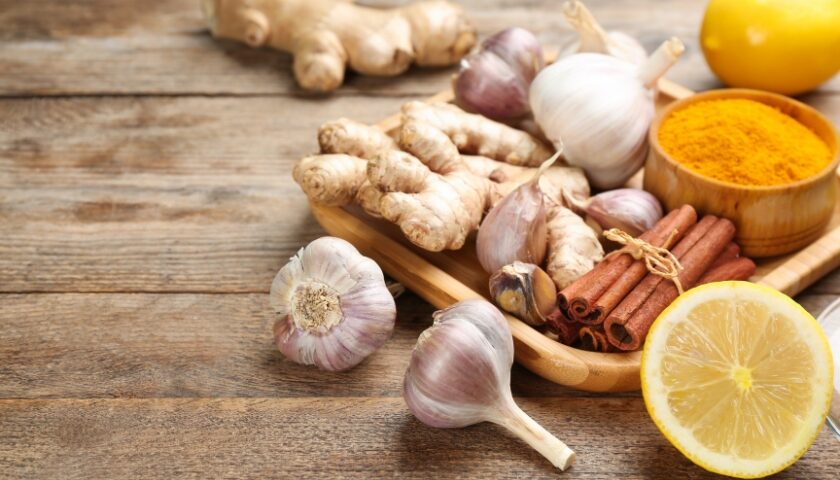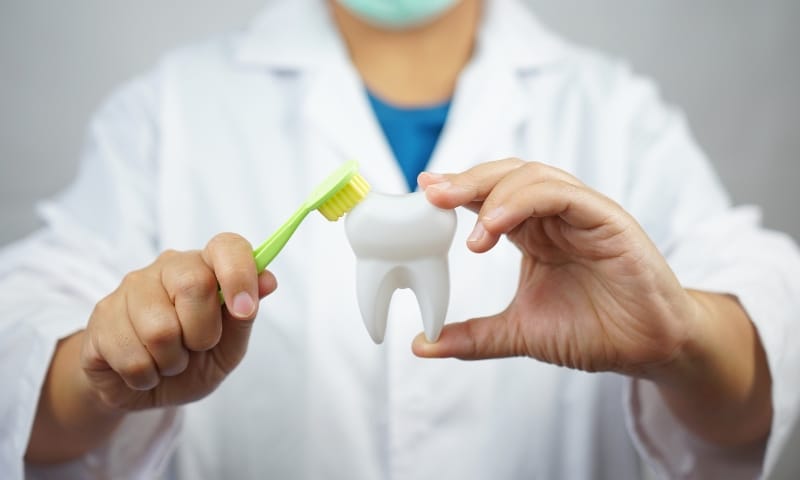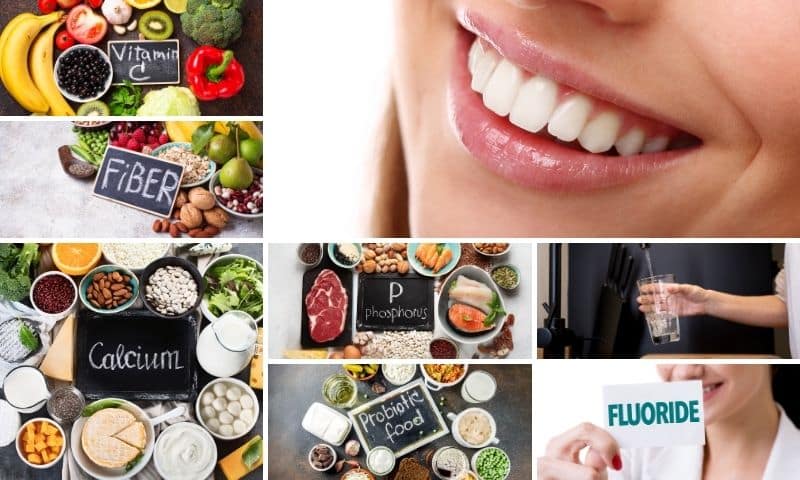Can Natural Antibiotics Fight Tooth Infections?

My Tooth Is Turning Dark (Black): What Should I Do?
June 18, 2024
Turmeric Teeth Whitening: Does This Ancient Spice Whiten Teeth?
July 14, 2024A throbbing toothache can bring your day to a screeching halt. But beyond the discomfort, a toothache can signal a deeper problem: a tooth infection. Left untreated, tooth infections can spread and cause serious health complications.
In this section, we’ll delve into the world of tooth infections, understanding their causes, symptoms, and the risks of ignoring them.
What is a tooth infection?
A tooth infection occurs when bacteria invade the inner pulp of your tooth, which contains nerves and blood vessels. This invasion can happen through a cavity, a cracked tooth, or gum disease. The bacteria multiply, causing inflammation, pain, and pus buildup.
Here’s a scientific breakdown of the dental anatomy involved:
- Tooth Enamel: The hard outer layer protects the tooth.
- Dentin: A softer layer beneath the enamel containing microscopic tubes.
- Pulp: The innermost chamber housing nerves and blood vessels.
When bacteria breach the enamel and dentin, they reach the pulp, causing an infection.
Common Causes of Tooth Infections
Several factors can lead to a tooth infection. Here are the most common culprits:
- Cavities: Untreated cavities allow bacteria to enter the inner tooth.
- Cracked Tooth: A crack in the tooth can provide a direct pathway for bacteria.
- Gum Disease: When gum disease (periodontitis) progresses, it can create pockets around the teeth, allowing bacteria to seep into the pulp.
- Worn-down Tooth Surfaces: Over time, worn-down tooth enamel can expose the dentin, making it vulnerable to bacteria.
- Dental Procedures: In rare cases, improper dental procedures might introduce bacteria into the pulp.
Symptoms of a Tooth Infection
A tooth infection can manifest in various ways. Be on the lookout for these signs:
- Throbbing toothache: This is a hallmark symptom, often worsening at night.
- Tooth sensitivity: Pain when consuming hot, cold, or sweet foods and drinks.
- Swollen gums: The gums around the infected tooth may appear red, inflamed, and tender.
- Loose tooth: An infected tooth may feel loose due to bone loss around the root.
- Facial swelling: In severe cases, the infection can spread to the face, causing swelling.
- Fever: A low-grade fever may accompany a tooth infection.
- Bad breath (halitosis): Pus buildup from the infection can cause unpleasant breath odor.
Risks of Untreated Tooth Infections
Ignoring a tooth infection is a recipe for trouble. Here’s what you risk by not seeking dental care:
- Spreading infection: The infection can travel through the bloodstream to other parts of the body.
- Bone loss: The infection can damage the bone supporting the tooth.
- Abscess formation: A pus-filled pocket can develop at the tip of the tooth root.
- Tooth loss: In severe cases, the tooth may need extraction.
- Painful complications: Untreated infections can lead to excruciating pain and discomfort.
When to See a Dentist
If you experience any symptoms of a tooth infection, don’t wait! Prompt dental attention is crucial. Here’s when to schedule an appointment urgently:
- Severe and persistent toothache
- Throbbing pain that worsens at night
- Facial swelling
- Fever
- Difficulty breathing (in rare cases)
Natural Options for Toothache Relief
A throbbing toothache can be agonizing, and seeking natural remedies for some relief is understandable. However, it’s crucial to remember that natural remedies are not substitutes for professional dental care.
In this section, we’ll explore some natural options for temporary pain relief while emphasizing the importance of visiting a dentist in Olds, AB, for proper treatment of the underlying infection.
Natural Remedies Aren’t Substitutes for Professional Care
While natural remedies might offer temporary comfort, they cannot cure a tooth infection. Ignoring a dental problem and relying solely on natural solutions can worsen the infection and lead to serious complications.
For effective treatment of a tooth infection, consulting a dentist in Olds is essential. They can diagnose the cause, prescribe antibiotics if necessary, and address the root cause of the infection, which could involve a filling, root canal, or extraction.
Soothing Pain with Natural Methods
While you wait for your dental appointment, here are some natural methods that may provide temporary relief from toothache pain:
- Saltwater Rinse: Mix half a teaspoon of table salt in a warm glass of water. Swish thoroughly for 30 seconds and spit. Repeat several times a day. The salt solution has mild antiseptic properties and can help reduce inflammation.
- Cold Compress: Apply a cold compress to the outside of your cheek near the affected tooth. The cold can help numb the area and alleviate pain.
Important Note: These methods only address the symptom (pain) and won’t eliminate the infection itself.
The Potential of Natural Antimicrobials for Tooth Infections
Some natural substances possess potential antimicrobial properties. However, the research on their effectiveness against tooth infections is limited. We’ll delve deeper into some of these natural antimicrobials in the next section.
Exploring Natural Antibacterial Herbs
While traditional antibiotics remain the mainstay of treating tooth infections, some people seek natural alternatives. Here, we’ll explore a few herbs with potential antibacterial properties that might be helpful for toothaches.
Remember: Scientific evidence supporting their effectiveness for tooth infections is limited. It’s crucial to consult an Olds dentist for proper diagnosis and treatment.
Garlic: The Science Behind Its Antimicrobial Properties
Garlic, a common kitchen ingredient, has been used for centuries for its medicinal properties. Its potential benefits for toothaches stem from a compound called allicin. When garlic is crushed or chopped, allicin is released and exhibits some antimicrobial activity.
Here’s how garlic might be used for toothache relief:
- Chewing a clove of garlic (briefly): This allows the allicin to come into contact with the affected area. However, strong garlic can irritate the mouth, so use caution and rinse thoroughly.
- Topical application (diluted): Make a paste with crushed garlic and water. Apply a small amount to the outside of the cheek near the tooth (not directly on the gums).
Safety Considerations and Limitations of Garlic:
- Garlic can cause a burning sensation in the mouth.
- It can interact with blood-thinning medications.
- The allicin content in garlic can vary depending on the type and freshness.
- There’s limited scientific research on the effectiveness of garlic for tooth infections.
Clove Oil: A Potent Pain Reliever and Antibacterial Agent
Clove oil, extracted from clove buds, is a natural pain reliever and contains a compound called eugenol. Eugenol has anesthetic and antiseptic properties, which may explain its use in dentistry.
Here’s how clove oil might be used for toothache relief:
- Diluted topical application: Mix a few drops of clove oil with carrier oil (like olive oil) and apply a cotton swab dipped in the mixture to the affected gum (avoid direct tooth contact).
Safety Considerations and Limitations of Clove Oil:
- Clove oil is very strong and can irritate the gums and mouth tissues.
- Never use clove oil undiluted.
- Pregnant or breastfeeding women should consult a doctor before using clove oil.
- While clove oil might numb the pain, it won’t address the underlying infection.
Remember: Both garlic and clove oil offer temporary pain relief and should not be used as a substitute for professional dental care.
Neem: An Ayurvedic Herb with Antibacterial and Anti-inflammatory Properties
Neem, a tree native to India, has been used in Ayurvedic medicine for centuries. It possesses potential antibacterial and anti-inflammatory properties that might be beneficial for oral health.
Here’s how neem might be used for toothache relief:
- Neem Mouthwash: Prepare a neem mouthwash by boiling neem leaves in water, allowing it to cool, and straining. Swish thoroughly for 30 seconds and spit.
- Chewing Neem Leaves (with caution): This traditional practice might provide some relief, but neem leaves can be bitter.
Safety Considerations and Limitations of Neem:
- Neem leaves can cause stomach upset in some individuals.
- Pregnant or breastfeeding women should avoid neem.
- Research on the effectiveness of neem in treating tooth infections is ongoing.
Other Potential Natural Remedies
Here’s a brief mention of some other natural substances with potential benefits for oral health, but more research is needed to confirm their efficacy against tooth infections:
- Honey: Honey has antibacterial properties and might soothe a sore throat accompanying a toothache.
- Propolis: This resinous bee product has potential antimicrobial activity.
- Green Tea: Green tea contains compounds with antioxidant and anti-inflammatory properties that might promote oral health.
Remember: These natural remedies should be used with caution and don’t replace professional dental care.
Effectiveness and Safety of Natural Remedies
While some natural options might offer temporary relief from toothache pain, it’s crucial to understand their limitations when dealing with a tooth infection.
Limited Scientific Research on Natural Remedies for Tooth Infections
There’s limited high-quality scientific research to conclusively demonstrate the effectiveness of natural remedies in treating tooth infections. While some studies suggest the potential benefits of certain herbs like garlic and clove oil, more research is necessary to confirm their efficacy and establish safe and effective dosages.
Potential Benefits and Drawbacks of Natural Antimicrobials
Here’s a balanced view of natural antimicrobials:
1. Potential Benefits:
- It may provide temporary pain relief.
- Some herbs have mild antibacterial properties.
2. Drawbacks:
- Limited scientific evidence for effectiveness against tooth infections.
- Can interact with medications.
- It may cause side effects like irritation or allergic reactions.
Importance of Combining Natural Remedies with Dental Care
Natural remedies should never be a substitute for professional dental care. If you have a toothache, it’s vital to see a dentist in Olds for proper diagnosis and treatment. Here’s why:
- Diagnosis: A dentist can pinpoint your toothache’s cause and determine the infection’s severity.
- Treatment: Based on the diagnosis, they can provide the most effective treatment, which may involve antibiotics, fillings, root canals, or extractions.
- Long-Term Oral Health: Regular dental checkups and cleanings are essential for preventing future tooth infections and maintaining good oral health.
Remember, natural remedies can complement professional dental care, but they shouldn’t replace it.
Frequently Asked Questions
No, natural remedies cannot cure a tooth infection. While some herbs might offer temporary pain relief or possess mild antibacterial properties, they lack the potency to combat a full-blown infection.
The pain-relieving effects of natural remedies like clove oil or a saltwater rinse are usually temporary, lasting for minutes to hours.
Some natural remedies can have side effects. For example, clove oil can irritate the gums, and garlic can cause a burning sensation in the mouth.




